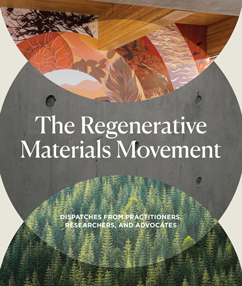 Policy Brief + Recommendations
Policy Brief + Recommendations
In this opinion piece, architect Martha Lewis addresses the ecological polycrisis of the twenty-first century and its impact on the architectural sector, emphasizing the urgent need for architects to reassess material choices and construction methodologies to mitigate environmental consequences.
This website explores the concept of planetary boundaries, a framework of nine key Earth system processes that humanity must stay within to ensure long-term sustainability and avoid irreversible environmental harm.


In this article, journalists investigate the American Chemistry Council’s promotion of chemical recycling, contrasting it with environmentalists’ concerns and highlighting issues found at Braven Environmental’s facility, suggesting that chemical recycling may not be as environmentally friendly or commercially viable as claimed.

The Lower Sioux nation are pioneering a first-of-it’s-kind green experiment with a manufacturing campus that integrates vertical hemp growing, hempcrete insulation processing, and healthy home construction, aiming to address housing and job shortages while reclaiming sovereignty.

Product manufacturers, policymakers, and professionals in the building industry are paying more attention to the potential health and environmental impacts of building products during installation and use, but there has been less consideration of the important chemical impacts, including contributions to environmental injustice or environmental racism, that may occur during other life cycle stages.
Healthy Building Network (HBN) teamed up with Energy Efficiency for All (EEFA) to expand understanding of products’ life cycle health and environmental justice impacts. Together, the two organizations developed a framework based on the principles of green chemistry and the principles of environmental justice, and applied this framework to two widely-used insulation materials: fiberglass and spray polyurethane foam (SPF) insulation.
Supporting Documents:
- Case study on Isocyanates in Spray Polyurethane Foam
- Case study on Glass Fibers in Fiberglass Insulation
This chapter in ILFI’s book The Regenerative Materials Economy explores the often overlooked life cycle chemical and environmental justice impacts of building materials, focusing on insulation materials like fiberglass and spray polyurethane foam (SPF).
Through a framework rooted in green chemistry and environmental justice principles, authors Rebecca Stamm of HBN and Veena Singla of NRDC analyze manufacturing realities, environmental justice concerns, and environmental health impacts, providing recommendations to improve the industry’s sustainability and reduce the negative effects on marginalized communities.

This video describes why plastic ends up in the environment and the solutions needed to disrupt the unsustainable use of plastic by holding manufacturers accountable for the products they make.
Dr. Jonathan Foley, Executive Director of Project Drawdown, talks about how carbon offsets and “net zero emissions” claims are a dangerous distraction to meaningful climate change initiatives.


The Global Chemicals Outlook II assesses global trends and progress in managing chemicals and waste to achieve sustainable development goals, with a focus on innovative solutions and policy recommendations.
More than 15% of North Americans report an unusual hypersensitivity to common chemical products such as those used in new-home construction. Another 40% may have mild symptoms of which they’re unaware.
This book explores the journey of designing and building a prototype healthy house, aiming to provide a sanctuary for healing and addressing environmental hypersensitivity, serving as a comprehensive guide for those interested in healthier approaches to design, construction, or remodeling.


 Health
Health Climate Change
Climate Change Equity
Equity Pollution
Pollution